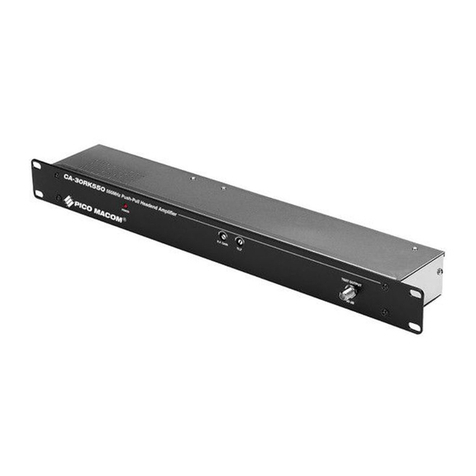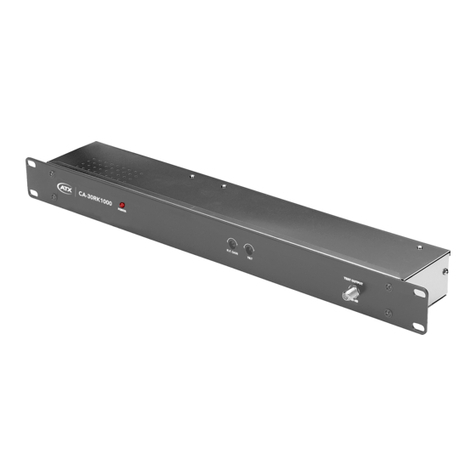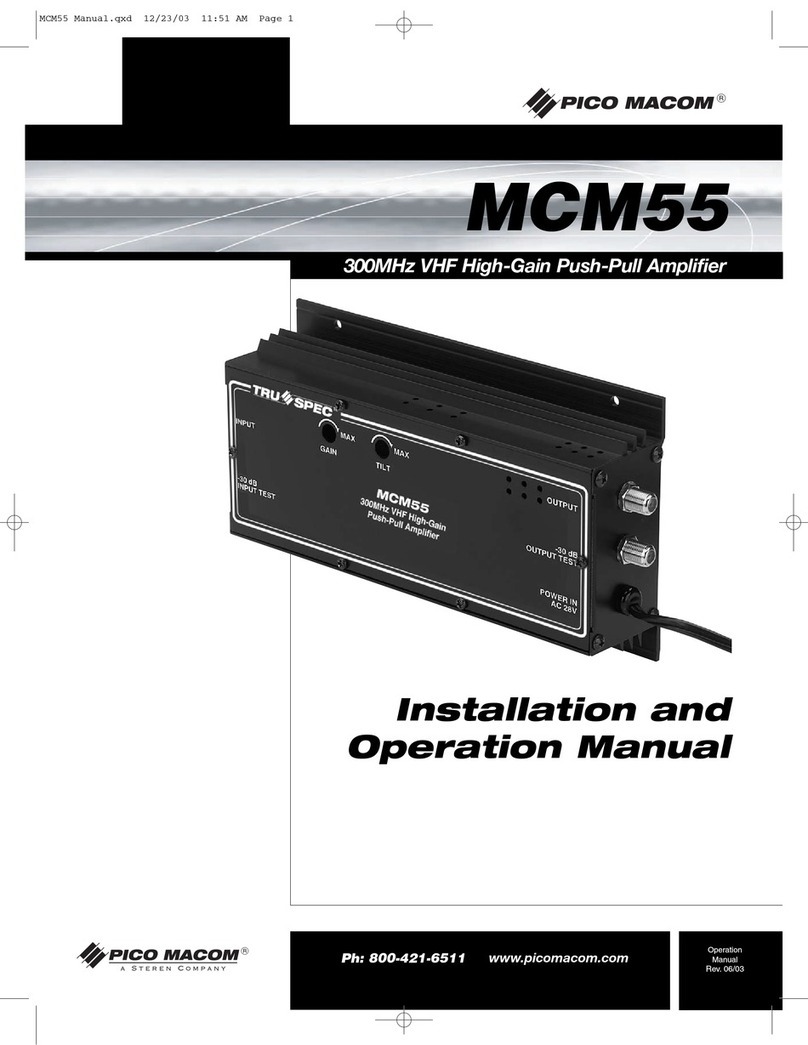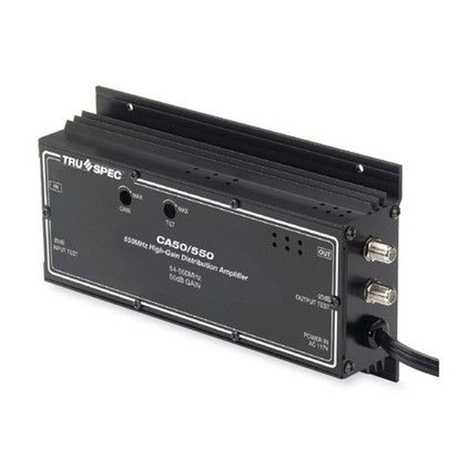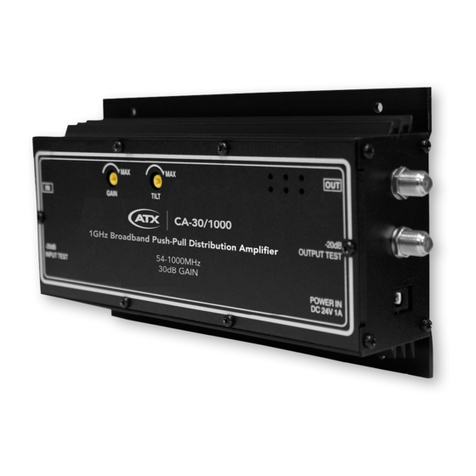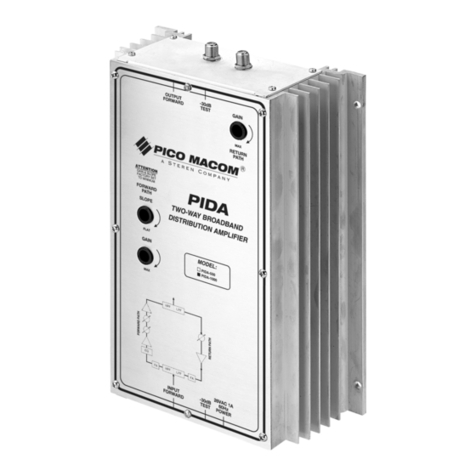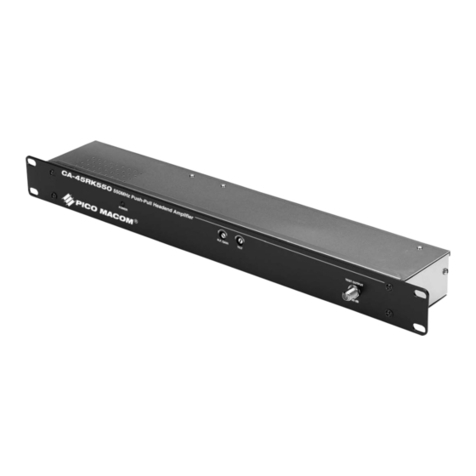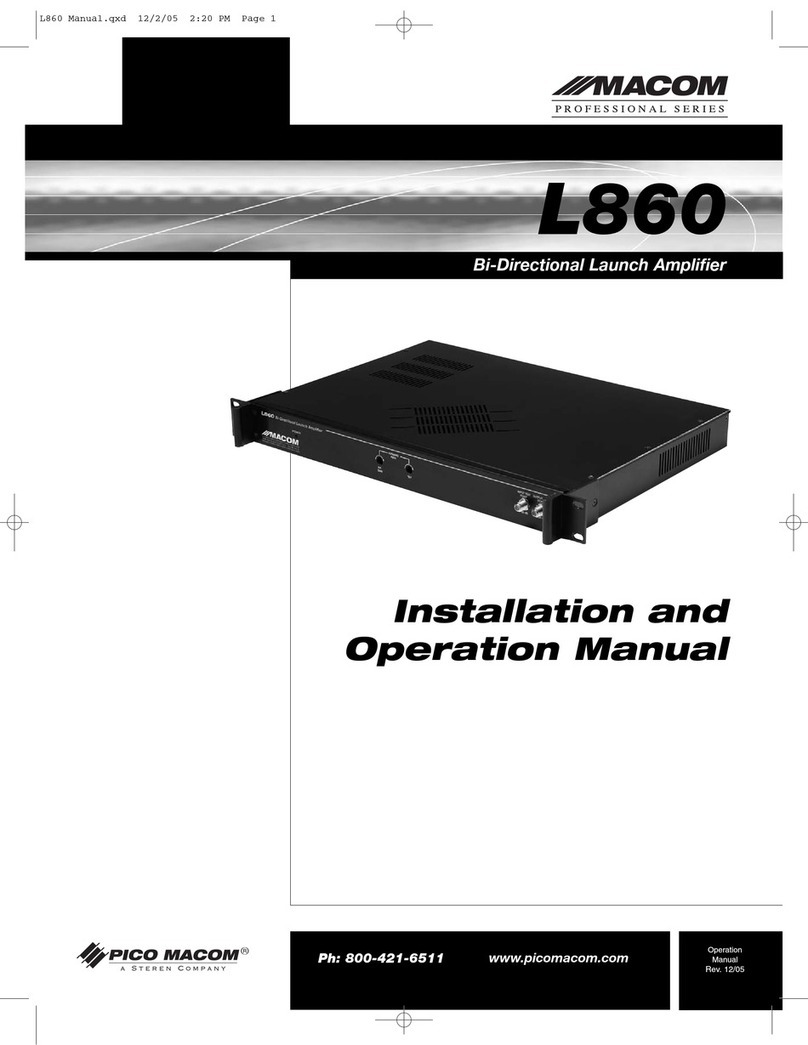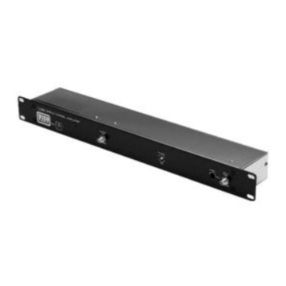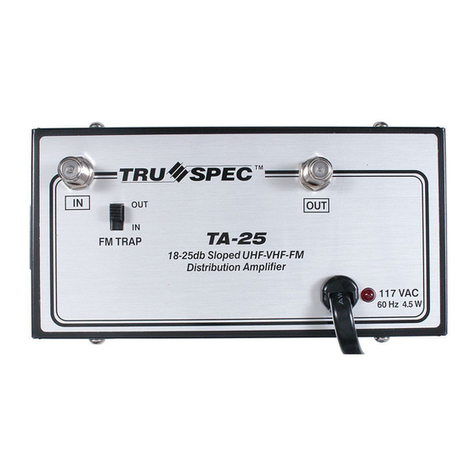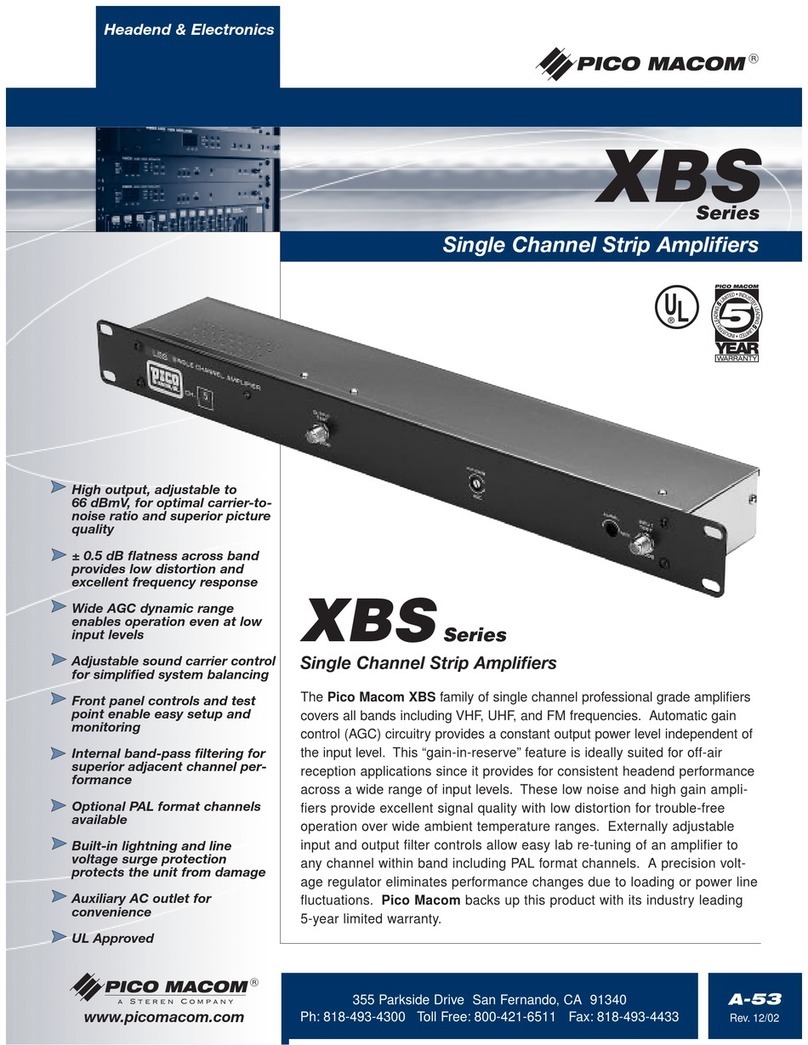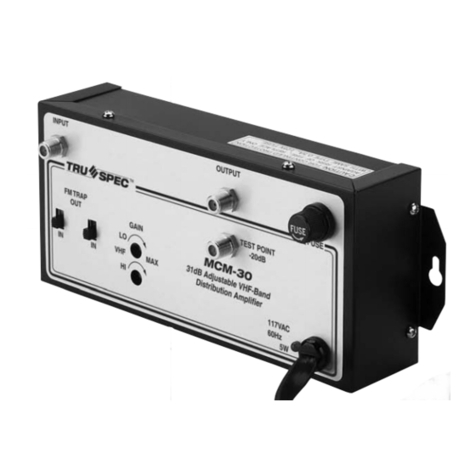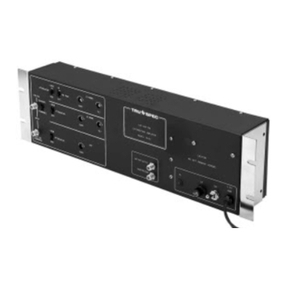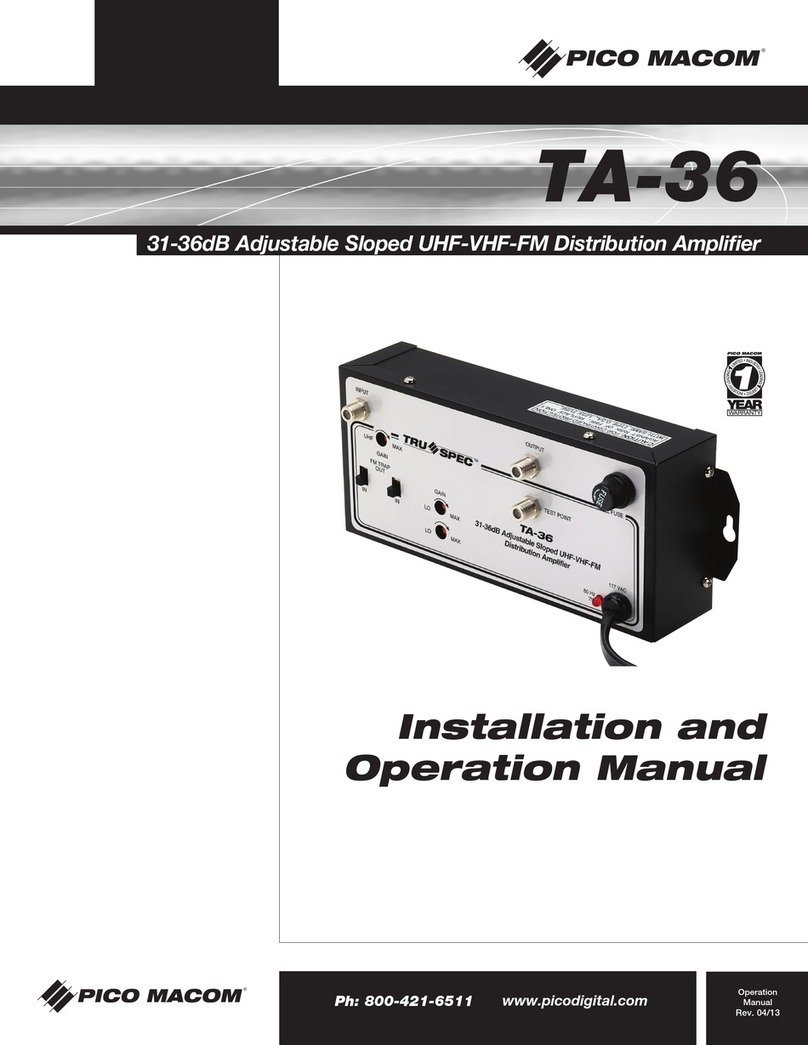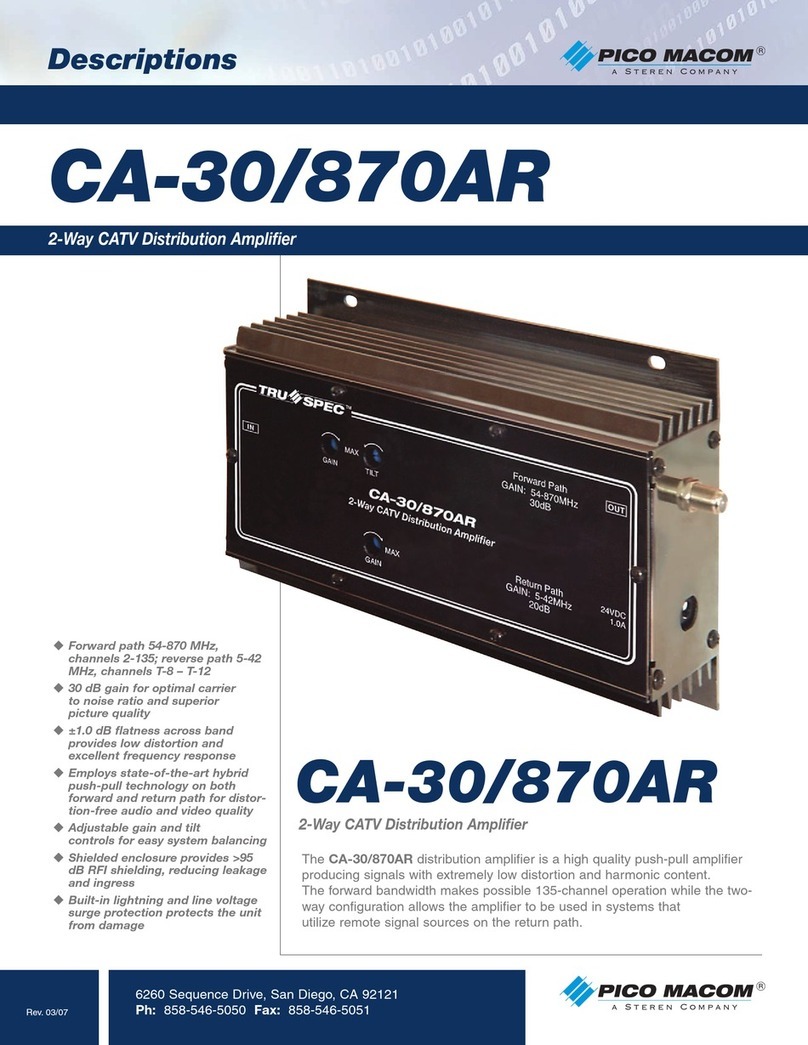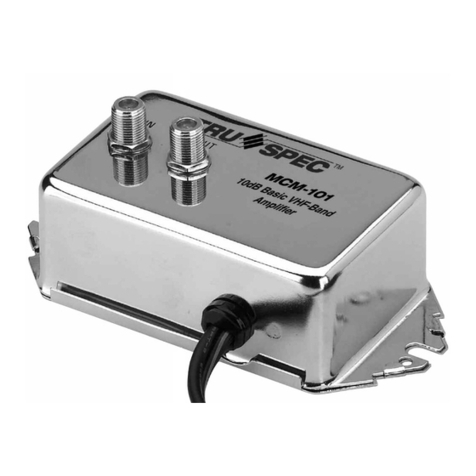PICO MACOM INC. 12500 Foothill Blvd. • Lakeview Terrace CA 91342 • (818) 897-0028 • (800) 421-6511 • FAX (818) 834-7197
3
Section 4
D E S C R I P T I O N S
A N T E N N A S E L E C T I O N
Pre-Amp
MPA-25
Broadband Single Channel
VHF
MX-7
0R
LOW
VHF
DSV-3
DSV-4
HIGH
HLSJ
20 dBmv to
Headend
10 dBmv
UV SJ UHF MX-4U
19 dBmv
DC-20
Test
-1 dBmv
18 dBmv 11 dBmv
12 dBmv
DC-20
Test
UHF DSU-3
UVSJ
20 dBmv to
Headend
19 dBmv
-1 dBmv
18 dBmv
17 dBmv
12 dBmv
9 dBmv
10 dBmv
12 dBmv
The proper reception of Local
Off Air Television Signals
(UHF VHF) is essential to a quality
Private Cable system. The use of a
commercial quality off air antenna
is a must for optimum television
reception. Since every location has
different needs and problems, a site
survey should be completed before
starting the system. There are three
methods of off air reception; Broad
band, Single Channel Yagi or a com
bination of both. The method to use
will depend on the direction the
signals come from and the strength
of the signals. A good quality field
strength meter is a must for measur
ing signals.
Broadband Antennas
These are used in areas with moderate
to strong signal levels and when the
signals are coming from the same
general direction. A mast mounted
broadband, low noise pre amplifier
is recommended to boost the input
levels to over 20 dBmv. The incom
ing headend signal is divided into
the VHF and UHF bands using a
UVSJ separator. A DC 20 (direc
tional coupler) is inserted for use as
a 20 dB down test point. The UHF
signals are then split with a DSU *
series splitter and inserted into a
converter or channel processor. The
VHF signals are band separated once
again using a HLSJ hi/low separa
tor. The low and high band signals
are then split using DSV * high
isolation splitters. Each splitter out
is routed to the proper headend com
ponent.
* The number of ports is determined
by the number of channels.
Another option on VHF signals is to
use a MX 7 or MX 4V. The MX 7
& MX 4V are frequency selective
splitters for up to 7 non adjacent
10 foot dish. In some areas where
the signals are very weak (outside
60 miles from the transmitter) a
single channel pre amplifier must
also be used to bring the signal to
usable levels. Because these are
made to a specific channel they can
be entered directly into the headend
strip amplifier converter or proces
sor input. High gain UHF antennas
are designed to cover blocks of chan
nels such as 14 26, 26 38, 38 50,
50,62, 62 74 etc.
Combination Broadband & Single
Channel Yagis
Using a combination of antennas is
common in areas that have many
variable signal levels coming from
different directions. A good ex
ample is sites located between Los
Angeles, and San Diego. Los An
geles has 2,4,5,7,8,11,13,28 com
ing from the North, San Diego has
6,8,10,39 from the South.
The signals received off of broad
band antenna will vary by as much
as 15 dB form channel to channel.
Signals received off an antenna are
never adjacent. A channel 2 would
not be located in the same geo
graphic location as a channel 3
(channels 4 and 5, and channels 6
and 7 are adjacent in number only).
Part 73.606 of the “Code of Federal
Regulations” can be used to locate
the transmitter locations in the vi
cinity of your headend. The Soci
ety of Cable Engineers (SCTE) also
sells a paperback book of mapped
locations of each FCC licensed VHF
transmitter. The cost of the manual
is less than $25 and is well worth
the price.
VHF channels. Built in attenua
tors help adjust signal levels
evenly.
Single Channel Yagi*
These are used when the signals
are coming from opposite direc
tions and at lower signal levels.
Single channel VHF Yagis are cut
to a specific channel enabling the
antenna to have much higher gain
than a broadband antenna.
*Note that the lower the VHF
frequency the larger the antenna.
It is analogous to satellite systems
using a 16 foot dish instead of an
